weather
Latest

Swiftly-falling snowstorms may fall at night on Mars
Certain areas of Mars develop clouds at night that drop icy rain rather quickly -- and in some areas, perhaps snow. While neither have been strictly observed, researchers have developed new computer models that forecast frozen precipitation on the red planet, which might lead to snowy drifts. And while science had previously theorized that Martian precipitation in these storms took hours to descend one mile, the new predictions shave that down to minutes under certain conditions.

Forecast data model warns you of tornadoes hours in advance
Meteorologists usually only issue warnings for tornadoes when they're imminent, which gives you precious little time to take cover -- the American average is just 13 minutes. NOAA researchers may soon give you much more time to get to safety, though. They recently conducted the first practical test of a new model, Warn on Forecast, that gives you up to 3 hours' notice. The technique merges radar, satellite and surface data into a highly detailed prediction model. When you make frequent-enough predictions (every 15 to 20 minutes), you can tell when incoming weather patterns are very likely to trigger warnings.

Climate change could prevent food getting around the world
Climate change is bad news for basically every facet of human existence and now it's set to literally hit us in the gut by threatening global food supplies. According to a new report by leading think tank Chatham House, global warming is on course to produce more violent storms and increased flooding, affecting both crop yields and global trade routes.

The Air Force and IBM are building an AI supercomputer
Supercomputers today are capable of performing incredible feats, from accurately predicting the weather to uncovering insights into climate change, but they still by and large rely on brute processor power to accomplish their tasks. That's where this new partnership between the US Air Force and IBM comes in. They're teaming up to build the world's first supercomputer that behaves like a natural brain.
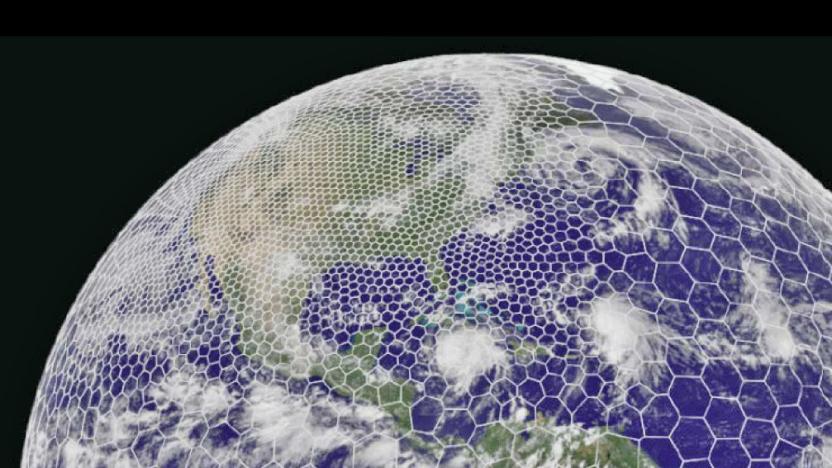
IBM supercomputers will power global weather forecasts
IBM's supercomputers might soon power the weather-predicting systems of tomorrow. Through its subsidiary The Weather Company, the computing titan has partnered with the University Corporation for Academic Research (UCAR) and the National Center for Atmospheric Research (NCAR) to move beyond today's regional-scale forecasting to anticipate weather at the local level...and aspire to introduce the first model that covers the whole globe.

'Forza Motorsport 7' has more than just 4K to offer Xbox racers
When Microsoft announced Forza Motorsport 7, it was easy to focus on its eye-popping 4K resolution while maintaining 60fps, but the most important question is always, "How does it drive?" After some time playing with a gamepad, I can report that the realistic driving model Turn 10 has refined throughout the series' run is here and better than ever. Later, during a closed-door demonstration, I heard a bit about and saw some features that will be in the game when it ships this fall, like dynamic clouds that cast moving shadows on the track.

AccuWeather now lets you look at the forecast in virtual reality
Checking the weather report is usually a colorless, simple experience -- a glance at an app to see the five day forecast or check the news for any major storms or events. If you have a Samsung Gear VR device, however, your daily forecast could soon be an experience. AccuWeather's new VR experience promises to offer immersive weather news, innovative forecasts and 360-degree video of severe weather events. o of severe weather events.
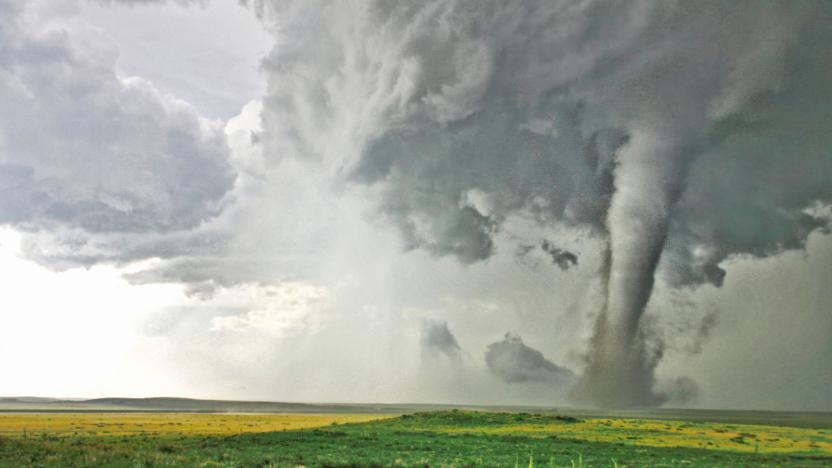
Supercomputer simulation looks inside of 2011's deadliest tornado
In may of 2011, a sequence of tornadoes roared across the midwestern United States. The incident became a focal point for scientists eager to learn what it is about supercell storms that allow them to form such devastating tornados. It's an important field of study, but a challenging one -- these storms are so enormous there's simply too much data for typical methods to work through. So, what's a atmospheric scientist to do? Use a supercomputer, of course.

Tiny airborne probe could help local weather forecasts
To date, it hasn't been easy to get loads of airborne weather data beyond major airports. Airliners have had a sophisticated probe system (TAMDAR Edge) for over a dozen years, but that doesn't help much in those remote areas where you may only see smaller airplanes or drones. NASA is close to covering this gap, though: it recently started test-flying a relatively tiny, lightweight version of TAMDAR Edge aboard an Ikhana drone. The tech promises real-time weather data on virtually any aircraft, filling in local atmospheric conditions even in barren places like the Arctic. You could have clearer indications of when a thunderstorm is brewing in a very specific region, or track previously unrecorded conditions above hurricanes.

Facebook puts a weather section in its mobile apps
Facebook aims to offer almost everything you'll want to have on a phone: games, video and photo filters, chat apps, shopping portals and now even week-long weather forecasts. The social network has rolled out a full-fledged weather section right within its mobile apps, and a spokesperson told TechCrunch that around 95 percent of users around the globe should already have access to it.

ICYMI: The U.S. Army is making actual hover bikes
try{document.getElementById("aol-cms-player-1").style.display="none";}catch(e){}Today on In Case You Missed It: The Galactic Empire will have some competition for Speeder Bikes soon enough, from the US Army. Researchers there have been working on hoverbikes for a few years now, based on an Australian inventor's design. Make sure to watch the video of the temperatures stacking up each year, bringing us to the hottest recorded weather for 2016, or a video of the sunspot twice as big as Earth. As always, please share any interesting tech or science videos you find by using the #ICYMI hashtag on Twitter for @mskerryd.

ICYMI: Birds the magical flying machines
try{document.getElementById("aol-cms-player-1").style.display="none";}catch(e){}Today on In Case You Missed It: There are three main theories of flight and it turns out, Stanford has poked holes in them by simply training a mini parrot to wear tiny safety goggles, then fly through a laser sheet. The video is more adorable than you could probably imagine so feel free to get your fix here. Meanwhile, NASA's new jet engine could make waves in both increased fuel efficiency and plane design since it relies on slower-moving air currents. The Arctic Sea Ice video is here, but the must-watch in this scenario is the Weather Channel take-down of Breitbart News. The video of the lawn picture maker is here. As always, please share any interesting tech or science videos you find by using the #ICYMI hashtag on Twitter for @mskerryd.

Watch the US launch a next-gen weather satellite at 5:10PM ET
If all goes according to plan, the US is about to enter a new era of weather tracking. The United Launch Alliance is scheduled to launch the first instance of GOES-R (Geostationary Operational Environmental Satellite), the US' next-generation weather observer, at 5:40PM Eastern (live NASA coverage starts at 5:10PM). The new satellite not only captures sharper images width more wavelengths, but takes those snapshots at a much higher frequency that promises to change how meteorologists and climatologists track environmental conditions.

NOAA: US snow cover hits an 'all-time low' for November
Researchers just supplied more evidence that climate change-related temperature increases are having a material effect on the planet. America's National Oceanic and Atmospheric Administration reports that snow cover in the lower 48 states is the lowest ever recorded for mid-November. As you can see in the map below, there's very little snow on the ground in the country -- you'd likely have to climb a mountain to see it. For contrast, the average snow cover between 1981 and 2010 reached as far south as New Mexico.

White House hopes to fight climate change with data sharing
Despite some scary evidence that climate change is affecting weather patterns and even shifting how the Earth moves, 43 percent of Americans wouldn't spend a buck a month to fight it. With Congressional deadlock standing in the way of a national strategy to combat it, the White House has launched its own endeavor to find solutions. In typical Obama fashion, it involves making government data public. The Partnership for Resilience and Preparedness (PREP) will give organizations access to troves of environmental information so they can make their own plans to counter climate change.

Dark Sky's hyperlocal weather app is now available on the web
Four-year-old mobile weather app Dark Sky is mostly known for two things: its beautifully rendered radar maps and startlingly accurate hyperlocal weather predictions. The latter was Dark Sky's killer feature by far, and used your smartphone's GPS to let you know exactly when and how long you'd get rained on. With notifications like "Heavy rain starting in 12 min." it can be a lifesaver in rainy regions or places prone to sudden thunderstorms. Now those same features, along with a suite of new maps and visualizations, are available on your desktop via DarkSky.net.
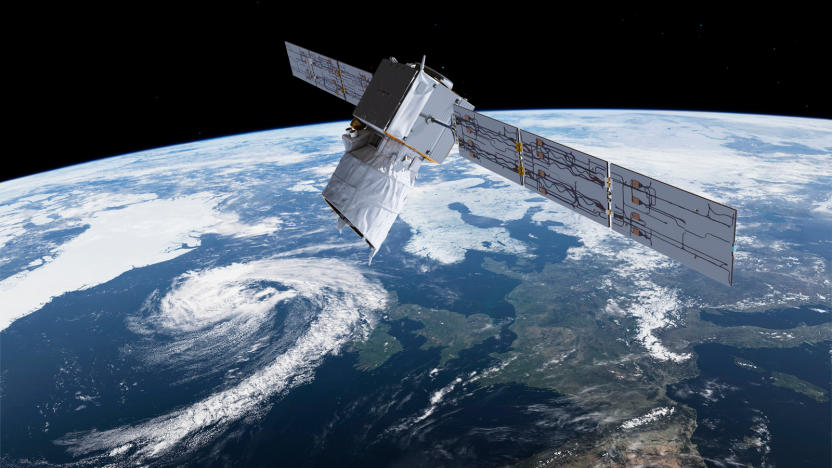
Europe's cutting-edge wind satellite should launch in 2017
Humanity is about to deepen its understanding of Earth's winds. The European Space Agency has secured a rocket launch deal for its wind-tracking Aeolus satellite, which is now expected to enter orbit before the end of 2017. The once-problematic spacecraft (technical issues postponed its 2015 launch) will be the first to profile wind on a worldwide scale thanks to the novel use of ultraviolet lidar in space. By bouncing laser light off of atmospheric air, dust and water, Aeolus will measure everything from cyclones to the presence of aerosols.
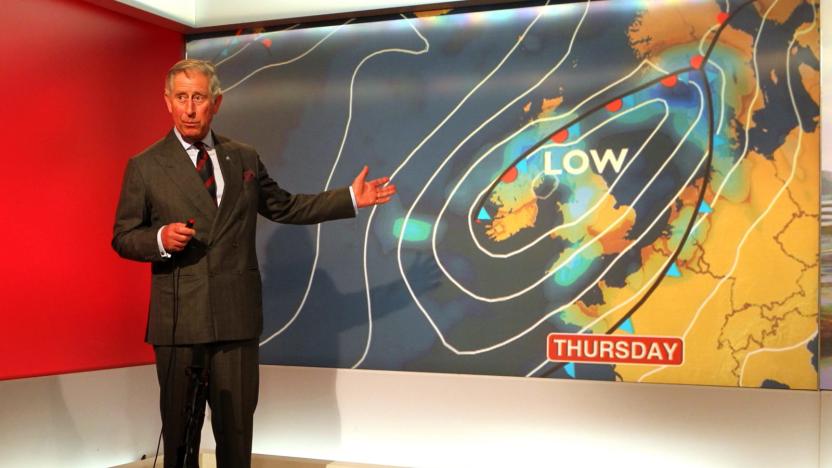
BBC picks new weather partner after 93 years with the Met Office
Although it's been almost a year since the BBC announced its 93-year partnership with the Met Office was coming to an end, the broadcaster didn't have replacement lined up at the time. During those months, it has considered bids from various new providers and ran what it calls "an open competition" to select a supplier who would appease licence payers by delivering high-quality services while keeping costs low. Today, the BBC confirmed that Netherlands-based Meteogroup was able to meet those requirements, allowing it to take over from the Met Office from spring 2017.
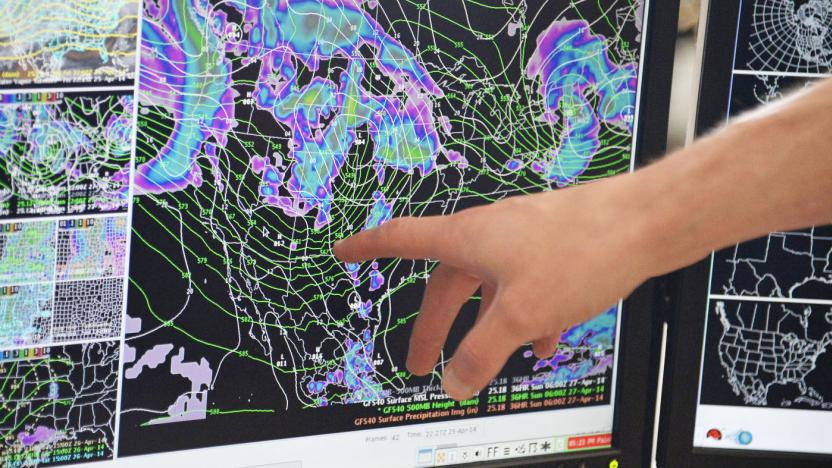
IBM's AI can predict how we'll react to the weather
According to the "butterfly effect" theory, weather is inherently hard to predict. But IBM thinks that if you throw even more computing smarts and data at it, you should be able to at least improve forecasts. Big Blue is marrying its own hyper-local weather models with global ones from (its own) The Weather Company and creating Deep Thunder, the best-named forecasting system ever. To analyze all the data, the company is building new deep-learning algorithms and training them using petabytes of historical data.

NASA aims to predict dust storms on Mars
If NASA is going to send people to Mars, it needs to predict the planet's weather. You don't want to land in the middle of a ferocious storm that wipes out your entire mission. Thankfully, the space agency just took a step toward making that happen. It's now detecting patterns in large regional dust storms by studying high-altitude (16 miles) temperature data from its orbiters. As dusty air tends to be much hotter at those heights, it's easy to tell when a giant regional storm is flaring up -- you just look for hot patches and their effects on the wind.









